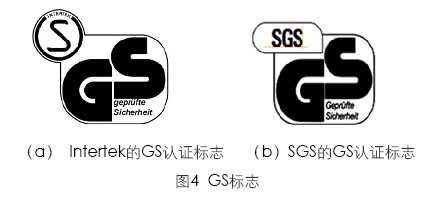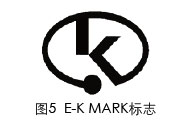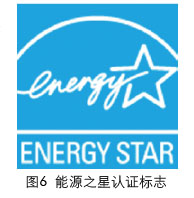GS logo
GS Marks Overview
The GS mark is a safety mark accepted by customers in Europe. Products that pass GS certification are even more popular, even though their sales price increases.
The EC stipulates that the "Low Voltage Directive (LDV)" be regulated from January 1, 1997. The GS already contains all the requirements of the "Low Voltage Directive (LVD)".
The meaning of GS is the German "Geprufte Sicherheit" (safety has been certified) and also the meaning of "GermanySafety" (German Security). GS certification is based on the German Product Safety Law (SGS), a voluntary certification based on the European Union's unified standard EN or the German national standard DIN. It is a recognized German safety certification mark on the European market.
The GS mark indicates that the product's use safety has been tested by a recognized independent agency. Although the GS mark is not a legally mandated requirement, it does enable the manufacturer to be bound by strict German (European) product safety laws in the event of a product failure causing an accident. Therefore, the GS mark is a powerful market tool that can enhance customer's confidence and purchase desire. Although GS follows German standards, it is recognized by most countries in Europe. And to meet the GS certification at the same time, the product will meet the EC's CE mark requirements. Unlike the CE, the GS logo has no legally mandated requirements. However, because the safety awareness is deeper into the ordinary consumers, an appliance with a GS mark may be more competitive in the market than a general product.
The product range covered by GS certification includes: household appliances, home machinery, sporting goods, home electronics equipment, electrical and electronic office equipment, industrial machinery, experimental measurement equipment, and other safety-related products.
GS logo style
The GS mark is generally used together with the sign of the authorized organization. German VDE, TUV Rheinland, TUV/PS, Intertek, and SGS certification bodies have all been authorized to carry out the GS mark service, as shown in Figure 4. 
(a) GS certification mark of Intertek (b) GS certification mark of SGS
Figure 4GS mark
GS logo usage requirements
1. Marks are generally used together with the sign of the authorized organization, pasted or printed on the product and on its outer packaging, and are clearly visible.
2. The size is enlarged and reduced in proportion.
3. The color is black.
E-KMARK logo
E-KMARK logo overview
Korean product regulations are similar to those in Europe. The specification of the Korean safety mark is based on the "Electrical Product Safety Control Law" promulgated by the government, which was revised on September 7, 1999. The revised content mainly includes four items: 1. Korean security regulations divide electronic products into two categories: mandatory products with EK-marks and non-mandatory products with K-marks; 2. Factory inspections for the first time Factory inspections of the year, including factories outside Korea, are mandatory; 3. Electronic safety standards in Korea are harmonized with IEC standards; 4. Only manufacturers can be license holders.
The certified products range from input power of AC50V to 1000V, and the products belong to the products in the government's publication catalog. The manufacturer must be the actual factory, and the original import agent certification is changed to the foreign manufacturer's certification directly. Products that are subject to compulsory safety certification can be manufactured, imported and sold in South Korea or exported to South Korea only if they are certified by a safety certification body designated by the Director of the Korean Bureau of Technical and Standards (KATS). In the certification of the product EK safety mark, safety testing occupies the main body, and the detection of electromagnetic compatibility is complementary. At present, the Korea Electric Inspection Institute (KETI), the Korea Testing and Experimentation Institute (KTL), and the Korea Electromagnetic Compatibility Research Institute (ERD) are approved by KATS as the designated certification body for the certification of electrical products.
E-KMARK logo style
South Korea's market access mark is also known as E-KMARK, as shown in Figure 5. 
E-KMARK logo usage requirements
1. The name of the certification body and the certification number must be attached below the logo.
2. Marks should be firmly affixed, printed on the product and its outer box, and clearly visible.
3. The size is enlarged and reduced in proportion.
4. The color is normal black.
Energy Star Sign
CB mark overview
EnergyStar is an energy conservation program led by the U.S. government that focuses on consumer electronics.
The Energy Star program was initiated by the US Environmental Protection Agency (EPA) in 1992 to reduce energy consumption and reduce greenhouse gas emissions from power plants. This plan is not compulsive, and vendors who voluntarily cooperate with this plan can label their qualified products with Energy Star. The earliest products that matched this plan were mainly computer, monitor and other information products, and gradually extended to motors, office equipment, lighting, and home appliances. Later it was extended to buildings. Since 1996, the US Environmental Protection Agency has actively promoted the Energy Star Building Program. The EPA assists voluntary participants to evaluate the energy use of their buildings (including lighting, air-conditioning, office equipment, etc.), and plans the building. As the energy efficiency improvement plan and follow-up operations of the property, some of the homes or industrial and commercial buildings that have introduced new concepts of environmental protection can also find the signs of the Energy Star.
With the successful operation of the “Energy Star†certification project in the United States, its international influence continues to increase. At present, Canada, the European Union, Japan, China Taiwan, Australia, New Zealand and other countries and regions have been authorized by the US Environmental Protection Agency to carry out Energy Star certification, and can use the "Energy Star" certification mark to carry out energy conservation certification of products. The above countries and regions have also successively introduced relevant incentive policies to promote the promotion and application of "Energy Star" certified products. To a certain extent, the product's "Energy Star" certification has become a pass to enter the markets of developed countries.
Energy Star Sign Style
The ENERGY STAR logo is a blue-blue (100% Cyan) main color, and currently includes four types of logos according to its use, namely: promotion promotion logo, certification logo, linked phrase logo, and partner logo. Figure 7 shows the Energy Star certification mark. 
Energy Star Logo Use Requirements
It is used for labeling products and their packaging, furniture and buildings that meet the Energy Star specifications.
RoHS certification
On January 23, 2003, the European Parliament and the Council of the European Union adopted the "Directive on the Restriction of the Use of Certain Hazardous Substance in Electronic Equipment", referred to as the RoHS Directive, also known as Directive 2002/95/EC. In 2005, the EU supplemented 2002/95/EC with the 2005/618/EC resolution, which clearly stipulated maximum limits for six hazardous substances. The RoHS Directive stipulates that any lead (Pb), cadmium (Cd), mercury (Hg), hexavalent chromium (Cr6+), polybrominated biphenyls (PBB), and polybrominated biphenyls that exceed the specified limit levels are prohibited from July 1, 2006. Phenoxide (PBDE) 6 kinds of harmful substances in the electrical and electronic products (with partial exemption) entered the EU market.
In order to actively respond to the EU RoHS directive and related environmental directives in other countries, domestic companies are currently passively responding to the RoHS directive in the form of test reports, mainly in accordance with the requirements of the Directive on harmful substances, and testing organizations to test samples submitted by customers. . The so-called RoHS certification is actually an ordinary sample delivery commission report. At present, the EU's supervision method is not very clear, but it is certain that it will not adopt a compulsory certification method, and there is no certification standard that can be followed and unified like a CE. Identification.
RoHS logo style
There is no uniform RoHS compliance mark in the European Union. The RoHS mark that is seen now is the RoHS mark issued by each inspection agency, as shown in Figure 8. 
Figure 7 RoHS mark
RoHS Logo Requirements
Products that comply with the RoHS Directive may be affixed with the RoHS certification mark of the corresponding testing organization. The marking may appear on the product, on the outer packaging of the product, on the company’s website, and on paper materials.
Conclusion
There are strict regulations on the use of product marks abroad. It is understood that in order to ensure product safety, the European Union recently introduced 765/2008/EC and 768/2008/EC two regulations aimed at strict CE mark certification. The new regulations make strict regulations on the size of CE markings, and require that each part of the CE mark must have the same vertical dimension and must not be smaller than 5mm. Whether the CE mark is reduced or enlarged and the original ratio is slightly different, it is considered as an error. use. Therefore, domestic manufacturers and exporters should carefully interpret the information conveyed by the new regulations, strengthen the management of certification marks used in export products, standardize the use of certification marks, and prevent EU member states from punishing due to irregular use of marks.
Customized metal products refer to metal products that are specifically designed and manufactured to meet the unique needs and requirements of individual customers. These products can be made from a variety of metals, including steel, aluminum, copper, brass, and titanium, and can be used in a wide range of applications, such as construction, automotive, aerospace, and electronics. Customized metal products can be fabricated using a variety of techniques, such as casting, forging, stamping, and machining, and can be finished with a range of surface treatments, including painting, plating, and powder coating. These products are often used in situations where standard off-the-shelf products are not suitable or do not meet the required specifications.
Customized Parts,CNC parts,Cup Turner,Cup Turner Tumbler
Dongguan Jiangxin Metal Products Co., Ltd , https://www.jiangxinbbq.com
